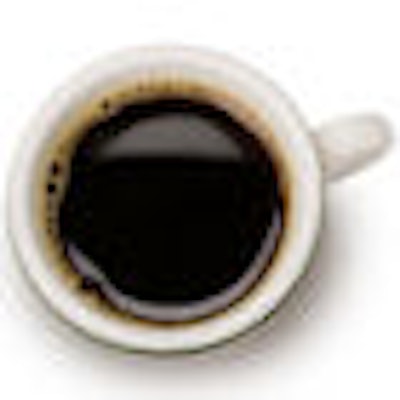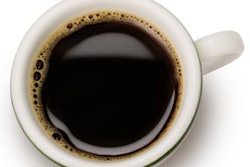
At-home bleaching using 6% hydrogen peroxide is effective in removing stains caused by coffee or cigarette smoke, according to a new study in the Journal of the American Dental Association.
Extrinsic stains have a multifactorial etiology involving chromogens that are derived from dietary sources or pigmented substances that are used habitually in the mouth, noted the study authors, from Pontifical Catholic University of Paraná and Federal University of Paraná in Brazil (JADA, May 2012, Vol. 143:5, pp. e1-e7).
"Coffee, tea, red wine, orange juice, some soft drinks, and food colorants are considered staining agents that lead to extrinsic tooth discoloration when consumed frequently," they wrote.
However, the literature is limited with regard to data pertaining to the best choice and efficacy of stain-removal techniques, they noted.
40 enamel surfaces tested
To evaluate the stain-removal ability of tooth bleaching and simulated tooth brushing, and to determine enamel susceptibility to restaining, the researchers measured the baseline color of 40 bovine labial enamel surfaces by using a portable colorimeter with a 6-mm diameter tip.
The color readings were taken in accordance with the Commission Internationale de l'Eclairage L*a*b* system against a white background. The specimens were then divided in half and stained with coffee and cigarette smoke.
The coffee solution was prepared by dissolving six grams of instant coffee powder in 300 milliliters of boiling water. The specimens were then immersed in the solution for 72 hours at 37°C.
The other 20 specimens were exposed to a smoking machine that contained smoke from five cigarettes that were smoked to a length of 10 mm beyond the tipping paper that covers the filter. The jar was kept saturated for 10 minutes. The researches repeated this cycle three times.
After the staining procedures, the color measurements were taken again and compared to the color of the specimens at baseline. The specimens were then divided into two subgroups and subjected to at-home bleaching (one hour per day for 21 days) or simulated tooth brushing (120 cycles per day for 21 days), followed by another color measurement.
Both staining procedures were then repeated and another color measurement was taken.
Coffee enhances restaining potential
Here are some of the key results:
- The first color measurement showed that cigarette smoke and coffee staining resulted in similar discoloration (p > .05).
- At the second color measurement, tooth brushing resulted in a significant reduction in color change only for specimens stained with cigarette smoke (p < .001), whereas tooth bleaching resulted in significantly reduced values for specimens stained with cigarette smoke or coffee (p < .05).
- Restaining with cigarette smoke did not increase the color change significantly for specimens that underwent bleaching or toothbrushing (p > .05). In contrast, restaining with coffee resulted in significantly more discoloration for both groups of specimens, irrespective of the stain-removal method (p < .05).
- At the last color measurement, the coffee-stained specimens that underwent toothbrushing experienced the highest mean discoloration, with statistically significant differences between these specimens and the specimens that were stained with cigarette smoke (p < .05).
"The study results show that at-home bleaching removed both coffee and cigarette-smoke staining," the authors concluded. "The restaining potential was greater for specimens stained with coffee than for those stained with cigarette smoke, regardless of the removal method used."
A 2008 study (Brazilian Oral Research, Apr-Jun 2008, Vol. 22(2), pp.106-111) that evaluated the effectiveness of whitening dentifrices for the removal of extrinsic tooth stains had more mixed results. Researchers from the department of restorative dentistry at Vale do Paraíba University in Brazil examined the effect of distilled water, Colgate, Crest Extra Whitening, and Rapid White on specimens stained in a solution of black tea. They found that only the whitening dentifrice Rapid White was effective for the removal of extrinsic stains.
Meanwhile, a Procter & Gamble study presented at the 81st general session of the International Association for Dental Research in 2003 found that effective dentifrices remove extrinsic stains only, while effective bleaching technologies remove both extrinsic and intrinsic color sources.



















